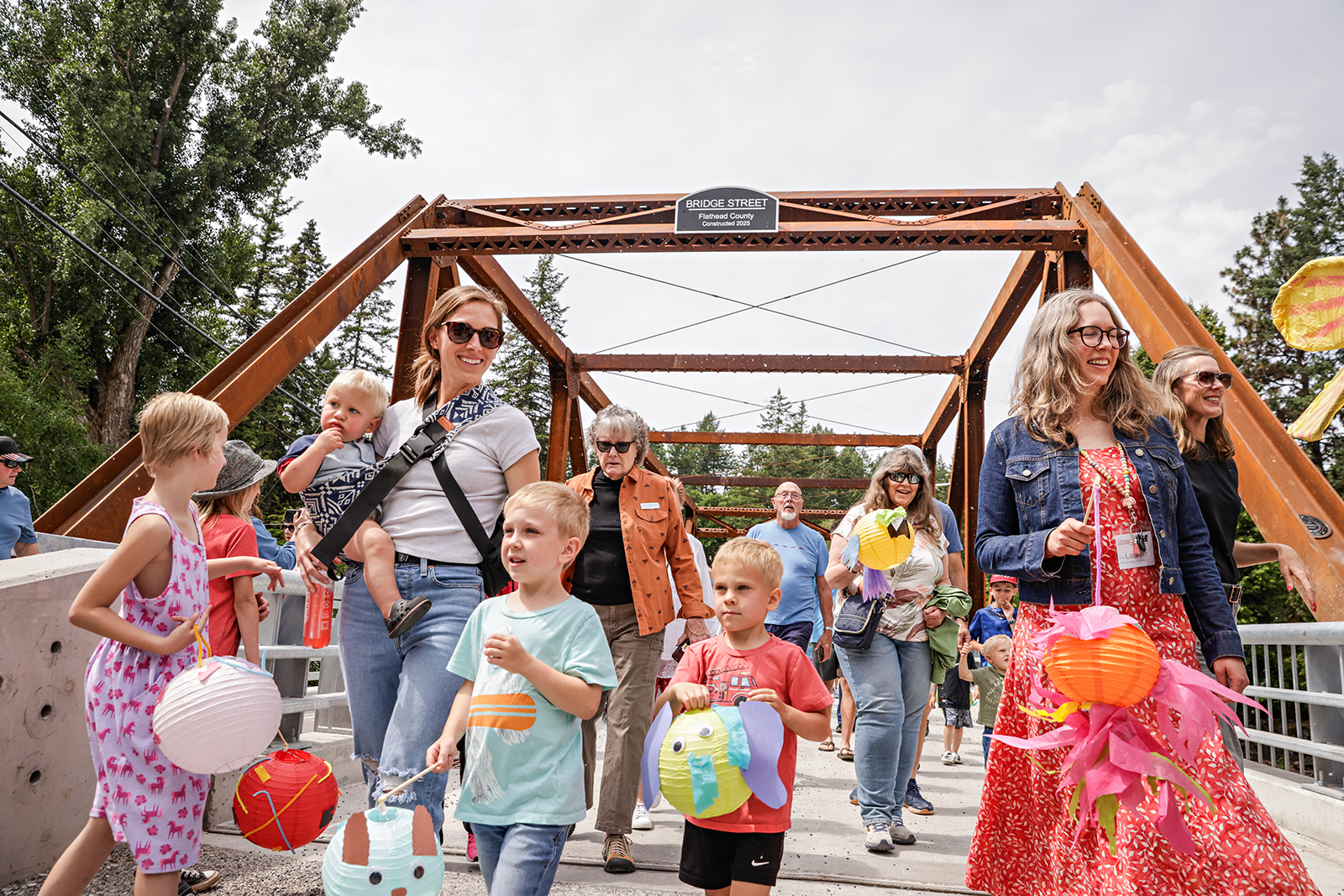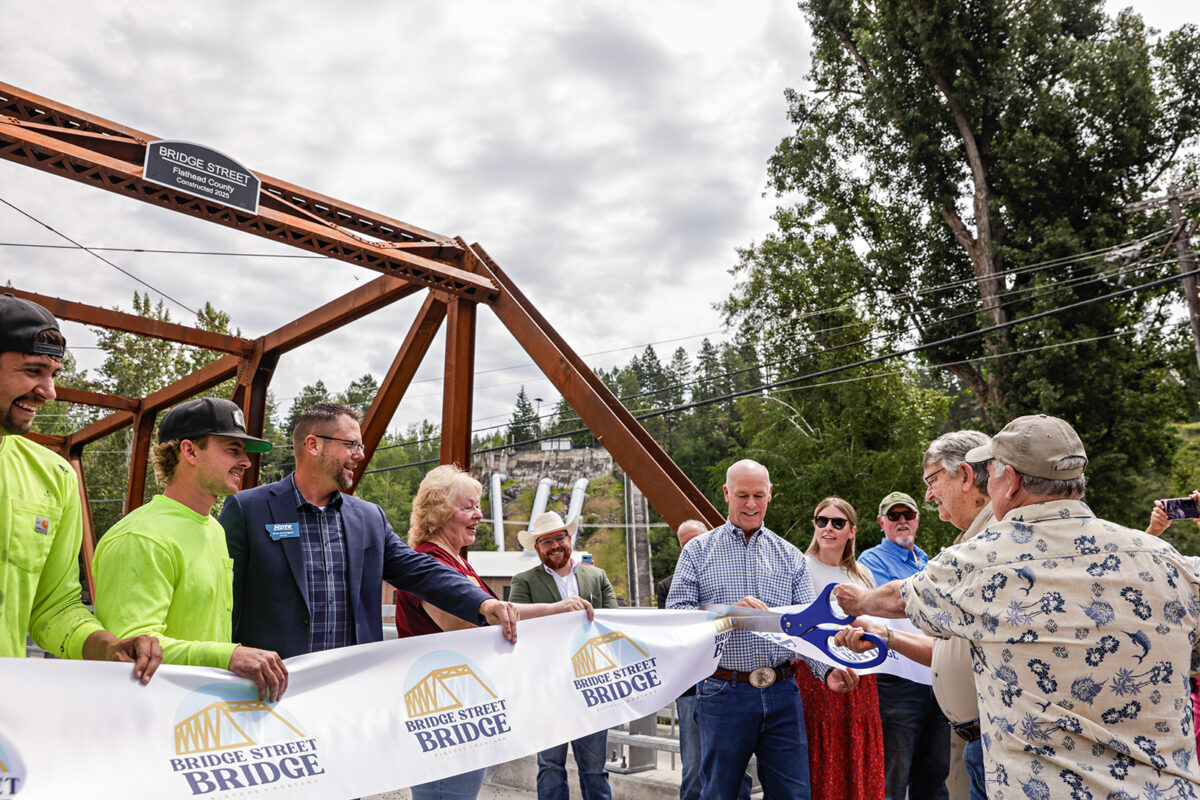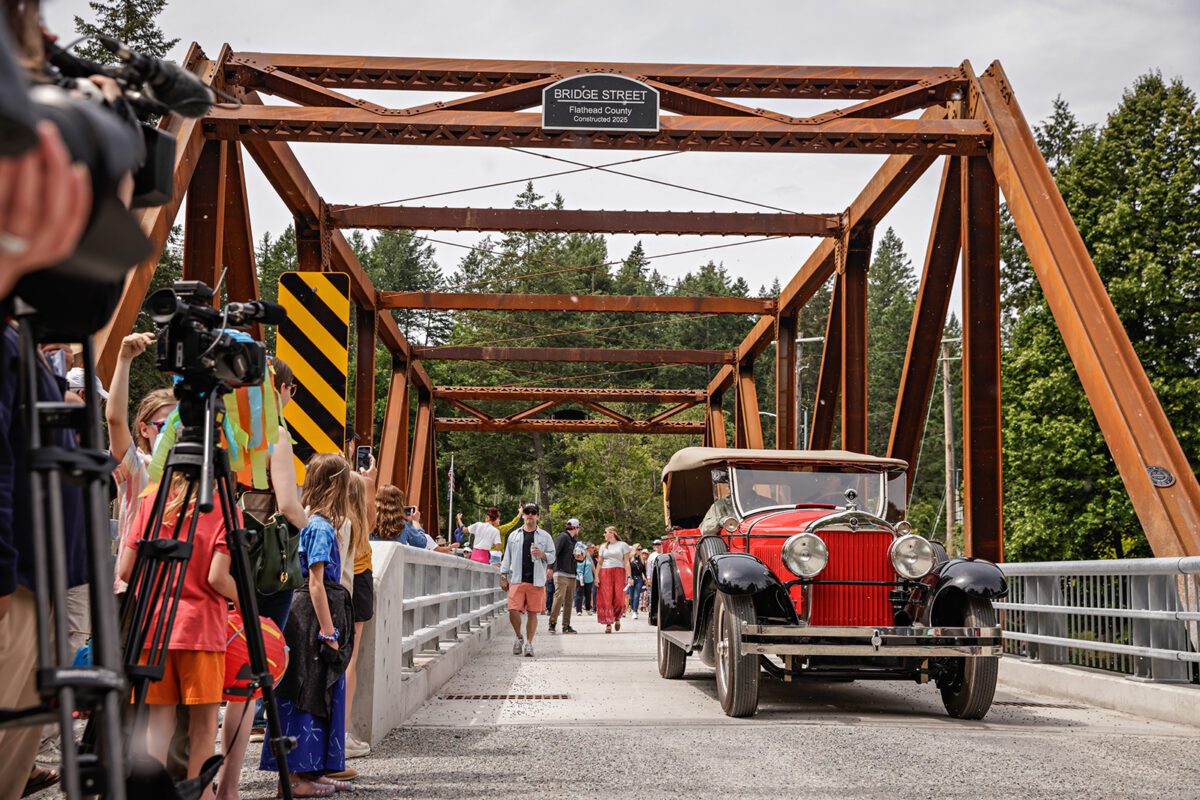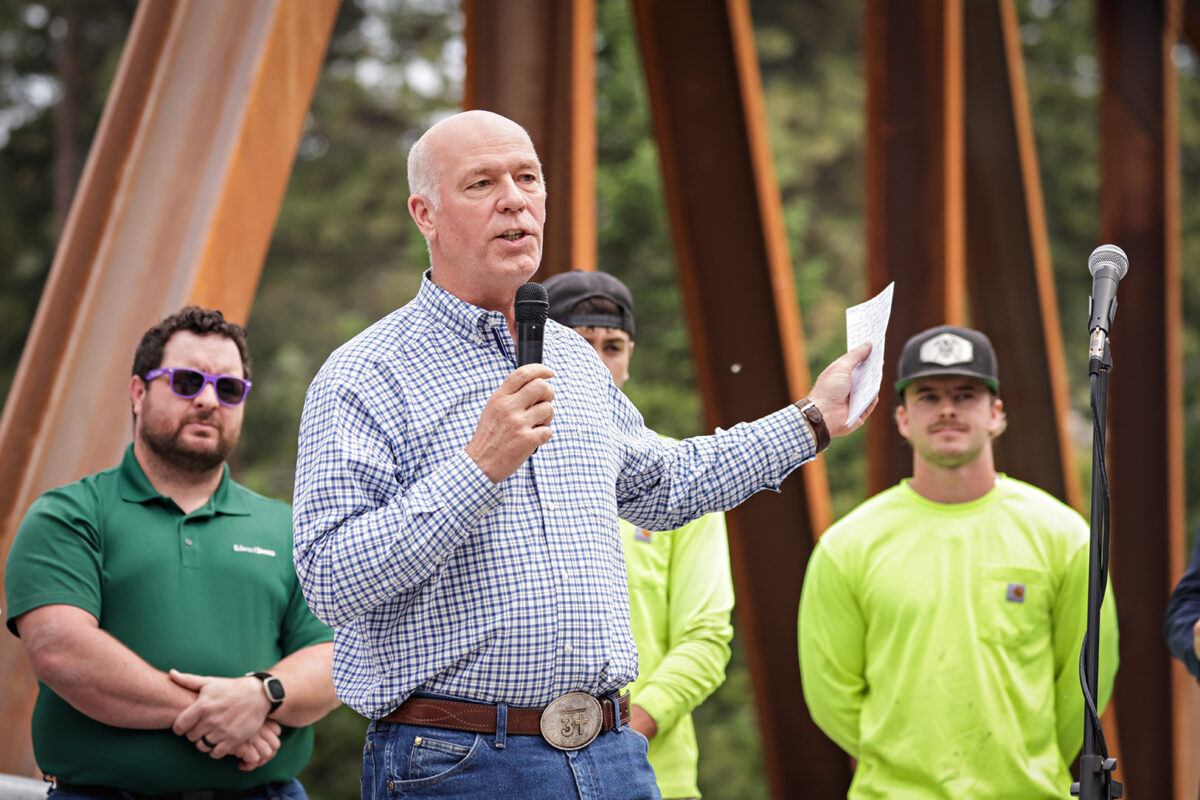Bigfork Celebrates Reopening of Historic Bridge Street Bridge
A ceremonial ribbon cutting marked the return of the 114-year-old bridge, reconnecting downtown Bigfork
By KATIE BARTLETT
After a year and a half of closure, the Bridge Street Bridge in Bigfork reopened on June 25, restoring a vital connection to the heart of downtown.
Around 200 people gathered late that morning on the south side of the bridge for a ribbon-cutting ceremony celebrating the iconic structure’s reopening. Speakers included Montana Gov. Greg Gianforte and Montana Department of Transportation (MDT) Director Chris Dorrington, who addressed the crowd before attendees paraded across the bridge for the first time since it closed in January 2024.
Built in 1912, the one-lane steel-truss bridge crosses the Swan River, connecting downtown Bigfork to Montana Highway 35. The bridge features a separate walkway catering to pedestrians in one of Montana’s most popular tourist destinations.
Gov. Gianforte emphasized the bridge’s economic role in his remarks to the crowd, calling it essential for connecting tourists to downtown businesses.
“This bridge is not just about going from A to B,” Gianforte said. “It’s about keeping the character of the community at the forefront, supporting workers, businesses, our families and all the visitors we have here.”
Flathead County and MDT closed the bridge in January 2024 after a routine inspection revealed that it can no longer reliably carry traffic.
MDT first identified it as in need of repair or replacement in 2017, when a feasibility study revealed it was no longer capable of carrying heavier vehicles, like emergency response vehicles and snowplows, due to corrosion and damage. Although MDT initially planned for bridge construction to start in 2026, the project became more urgent following the 2024 closure.

Dorrington acknowledged several MDT partners who helped make the expedited reopening possible. Among those he thanked were Battle Ridge Builders — the Gallatin County-based construction company that completed the project ahead of the anticipated June 30 finish date — as well as the Transportation Commission, Northwestern Energy, and Flathead County Commissioner Pam Holmquist.
“So many conversations that I’m a part of begin with ‘we can’t,” Dorrington said. “This bridge proves the exact opposite.”
While attendees — including Gianforte and members of the Battle Ridge Builders team — held the ribbon in front of the bridge, Community Foundation for a Better Bigfork President Megan Schoultz highlighted the Bridge Street Bridge’s significance as “one of the original landmarks of this town and part of the very roots of the community.”
“When the bridge was closed, it felt like a part of us was missing,” Schoultz said. “It was as though we were mourning a member of the community. The bridge may look new and different, but it’s better than ever, and best of all, it’s ours.”

With a pair of jumbo scissors in hand, Everit Sliter stepped to the front of the crowd to cut the ribbon and ceremonially reopen the bridge. His grandfather, Everit L. Sliter, platted and founded Bigfork in 1901.
Bigfork native Bud Robinson, a World War II veteran and centenarian, led the community parade across the Swan River in a 1925 Ford Model T, marking a century of Bigfork history.
Following him, children carried pastel paper lanterns decorated with streamers and googly eyes. The lanterns were made during a DIY paper craft event at the Bigfork branch of the Flathead County Public Library. The ceremony culminated in a celebration at Riverview Bar.

While the bridge was closed, pedestrians and vehicles were required to use Grand Drive to access downtown Bigfork. Several downtown Bigfork business owners expressed relief at the bridge’s reopening.
Amy Collett, the owner of Mountain Vibes Gallery and Gifts, said that a lack of clear signage immediately after the bridge closed made it difficult for visitors to find their way downtown, which impacted foot traffic.
“A lot of people, particularly visitors who were not local, got confused and thought downtown was closed,” Collett said. “They didn’t necessarily know where to go.”
She added that signage improved by April, and the summer tourist season was “just as congested as ever.” Collett also recalled increased traffic on Grand Drive due to the limited access during the closure.

The bridge’s role, however, extends far beyond recent traffic challenges. Bigfork Art and Cultural Center Director Julie Bottum highlighted its historical significance, explaining that Bigfork developed because of river access. She noted that the bridge has been essential for maintaining the flow of people and goods in and out of town since the first one was built in the late 1800s.
“We’re surrounded by water, and bridges are our arteries,” she said. “It felt almost like one of our arteries was blocked off.”
Bottum praised Battle Ridge Builders for their effort to finish the bridge in time for the July tourist season. She explained that the construction company donated metal salvaged during the repair, which will be transformed by Montana metalworker Jeffrey Funk. Using the reclaimed materials, Funk will craft benches to be displayed outside the Art and Cultural Center as part of a history exhibit honoring the Bridge Street Bridge.
“We gravitate toward the water in Bigfork,” Bottum said. “The bridge is a big part of that aesthetic, and we’re so excited to have it back and to be able to celebrate it.”